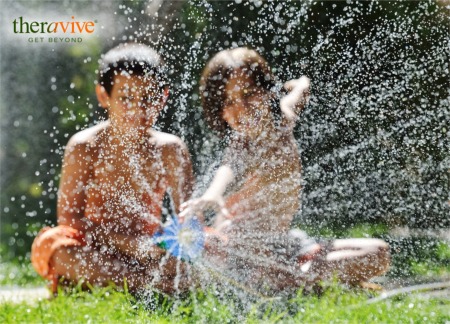 Summertime is known to be a time of relaxation, fun, family time, and long and lazy days. It is also a time when children are a little more independent, as they are off with friends, away at camp, on vacations and field trips, and learning and trying new things. Generally speaking, parents are prepared to send children on their adventures. Their backpacks are armed with bug spray, bottled water, sunscreen, hand sanitizer, and with extras of everything just in case. But what is often missed is the opportunity to arm them with safety from those who may try to harm them.
Summertime is known to be a time of relaxation, fun, family time, and long and lazy days. It is also a time when children are a little more independent, as they are off with friends, away at camp, on vacations and field trips, and learning and trying new things. Generally speaking, parents are prepared to send children on their adventures. Their backpacks are armed with bug spray, bottled water, sunscreen, hand sanitizer, and with extras of everything just in case. But what is often missed is the opportunity to arm them with safety from those who may try to harm them.
Summer Safety
No one really likes to think about “bad things” although social media and local news broadcasts frequently show that they do happen. Unfortunately, avoiding the topic does not make “bad things” go away. Research shows that awareness alone significantly decreases the chance that dangerous situations will occur (Townsend, 2013 ). One topic of concern, especially during the summer when children are naturally more independent, is sexual abuse. Sexual abuse is preventable especially when caregivers are knowledgeable about the facts and statistics (Briere & Elliott, 1994). Below is a list of helpful and easy to remember facts related to child sexual abuse (Townsend, 2013). Not only is it important to know these facts, it is important to share them.
Sexual Abuse Facts
- FACT: 1 in 10 children are sexually abused before their 18th birthday.
- FACT: 35 percent of child victims are 11 years old or younger
- FACT: Foster children are at an increased risk (ten times more likely) to be sexually abused
- FACT: 9% of all 10-17 year olds receive unwanted sexual requests while on the Internet (Jones et al, 2012)
- FACT: 23% of all 10-17 year olds experience unwanted exposure to pornography (Jones et al, 2012)
- FACT: Family and acquaintance child sexual abuse perpetrators have reported that they look for specific characteristics in the children they choose to abuse. (Snyder, 2000)According to research, non-familial perpetrators consistently say that in general they look for a certain "type" of victim (Snyder, 2000). Perpetrators report that they look for passive, quiet, troubled, lonely children from single parent or broken homes (Snyder, 2000). They also look to have a personal and trusting relationship with the potential victim and their family. Although this is alarming, there are ways to reduce vulnerability to sexual predators. First it should be noted that sexual predators have no specific profile. In fact, they are often friendly, attractive, charismatic, and they have easy access to children. Below are additional facts about the face of perpetrators.
- FACT: 90% of children who are victims of sexual abuse know their abuser
- FACT: 30% of children who are sexually abused are abused by family members
- FACT: 60% of children who are sexually abused are abused by people the family trusts
- FACT: 40% of children who are sexually abused are abused by older or more powerful children
- FACT: 10% or less of children who are sexually abused are abused by a stranger One of the most misunderstood facts about sexual abuse is that children can also be perpetrators. This is especially important during summertime when it is common for groups of children who have never met each other to be in close quarters and often in loosely supervised environments. Overall risk can be minimized when one-on-one isolated situations with children are eliminated (even with older youth in leadership positions), when interactions can be observed and interrupted, when the physical environment does not include easy access to any hidden or secluded areas, and when children are knowledgeable about the facts listed above.
Grooming
Another area of risk involves the process of grooming. Grooming occurs when an offender gradually but purposely gains the child’s trust in order to create an opportunity for victimization (Paolucci et al, 2001). The following are a set of warning signs often associated with grooming behaviors (Townsend, 2013):
• Special attention, outings and gifts
• Treating the child as if he or she is older
• Isolating the child from others
• Gradually crossing physical boundaries and becoming increasingly intimate/sexual
• Filling the child’s unmet needs
• Use of secrecy, blame, and threats to maintain control
• Filling needs and roles within the family Whether it's a summer camp, sports clinic, or church retreat, safety is maximized when there are policies in place that protect children from sexual abuse. Protective policies should include background checks, staff training on spotting and reporting abuse, and a written code of conduct on acceptable and unacceptable behaviors for which all staff members are held accountable. It is acceptable to ask about protective policies and also to refuse to send a child to a program that does not have policies and a code of conduct in place, even if the program has a great reputation and is long-standing. The most effective method of keeping children safe during the summer is to have frequent and direct conversations beyond bug spray, bottled water, and backpacks.
Talking to Your Children
Conversations can include asking a child what they would do if:
- Someone shows them something that makes them feel uncomfortable
- Someone asks them to keep a secret
- They see another child being harmed
- Someone tries to touch their private parts
- Someone threatens or scares them
- Someone they like or look up to asks them to touch them in their private area or asks them to touch another child sexually
Be Viewed As The Expert
Most children have been exposed to more than parents realize, usually by peers. When parents get a head start on talking about tough topics, they are more likely to be viewed by their children as “the expert” which increases the chance that a child will inform their parent first if something goes wrong or if they feel unsafe (Briscoe-Smith & Hinshaw, 2006). Because sexual abuse is so common, it is highly likely that children actually know someone who has been sexually abused. If children lack information and don’t have a responsible adult who they can openly talk to, then they are at increased risk of victimization (Briere & Elliot, 1994).
Summer can be a time for fun, exploration, new friendships, and memorable experiences. It can also be a time where children are abused and victimized, which can lead to a lifetime of emotional and behavioral problems. It is up to adults to do as much as possible to keep all children safe so that they can have the summer that they deserve. Adults have the power to take very basic preventative measures in order to maintain a safe and secure environment in which children thrive. Conversations about safety in general can cause some discomfort but that should not prevent the conversation from occurring. Just like other safety topics (teen driving, internet safety, preventing the flu virus, preventing accidental drowning) parents and other adults often need guidance on how to prevent child sexual abuse, not just during the summer, but all year-round. Environments and dynamics will change from season to season so the conversations need to be adjusted to account for those changes, and also developmental changes.
In addition to the information in this article, Darkness to Light’s Stewards of Children (www.d2l.org) provides nationwide trainings to individuals and organizations on how to effectively prevent child sexual abuse. If you are in the metro Atlanta, GA area, Standard of Care Psychological Services (www.standardofcarepsychological.com) provides year-round training for parents, children, organizations, and the community at large.
References
Briere, J. N. & Elliot, D. M. (1994). Immediate and long term impacts of child sexual abuse. The Future of Children, 4, 54-69.
Briscoe-Smith, A. and Hinshaw, S. (2006). Linkages between child abuse and Attention-Deficit/Hyperactivity Disorder in girls: Behavioral and social correlates. Child Abuse and Neglect, 30, 1239-1255.
Jones, L,. Mitchell, K., Finkelhor, D. (2012). Trends in youth internet victimization: Findings from three youth internet safety surveys 2000-2010, Journal of Adolescent Health 50: 179-186.
Paolucci, E.O, Genuis, M.L, & Violato, C. (2001). A meta-analysis of the published research on the effects of child sexual abuse. Journal of Psychology, 135, 17-36. Snyder, H. N. (2000). Sexual assault of young children as reported to law enforcement: Victim, incident, and offender characteristics. Washington, DC: U.S. Department of Justice, Office of Justice Programs.
Townsend, C. (2013). Prevalence and consequences of child sexual abuse compared with other childhood experiences. Charleston, SC., Darkness to Light. Retrieved from www.D2L.org
About the Author

Dr. Raushannah Johnson-Verwayne
, Psy.D.Dr. R. Johnson-Verwayne is a licensed clinical psychologist and the founder of Standard of Care Psychological Services, LLC, in Atlanta, GA. She advocates for those affected by severe emotional and behavioral problems and focuses on evidence-based trauma informed care while helping the entire family. Dr. Johnson-Verwayne has over 10 years of experience helping clients develop realistic, long-lasting, and life changing skills to improve their quality of life.
Office Location:
3915 Cascade Rd. Ste 105
Atlanta, Georgia
30331
United States
Phone: 678-973-2491
Contact Dr. Raushannah Johnson-Verwayne
Professional Website:
Www.standardofcarepsychological.com